60 years ago, on February 12, 1955, the plan to construct the Baikonur Space Center in Kazakhstan was approved. The facility tested intercontinental ballistic missiles and launched satellites.
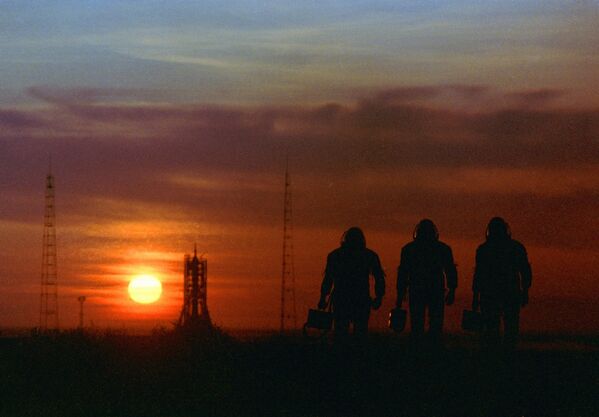
1/14
© Sputnik / Alexander Mokletsov
Baikonur Cosmodrome is the world’s first and largest operational space launch facility. As of 2012, Baikonur is the world leader in the number of space launches. Baikonur launches about 20 rockets annually. The second place is held by Cape Canaveral in the US with 10 launches a year.
Above: Astronauts at the Baikonur Space Center.
Above: Astronauts at the Baikonur Space Center.
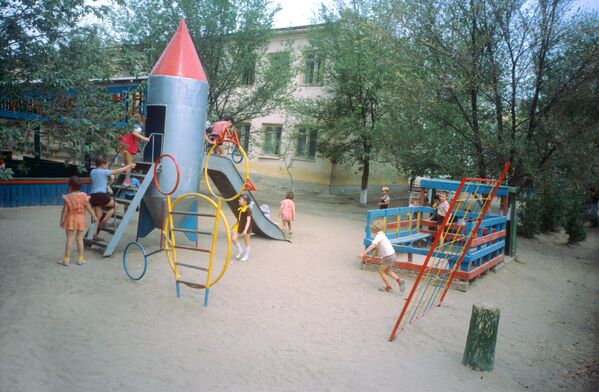
2/14
© Sputnik / Alexander Mokletsov
The space center includes launch facilities and a town. The town and the testing range were officially founded on June 2, 1955 when a directive of the Soviet Defense Ministry's General Staff approved the organizational structure of NIIP No. 5.
Above: Kindergarten № 5 in Baikonur, Kazakhstan.
Above: Kindergarten № 5 in Baikonur, Kazakhstan.
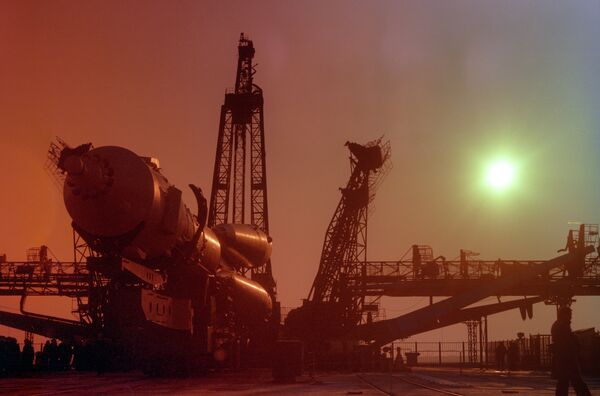
3/14
© Sputnik / Alexander Mokletsov
The space center's experts assemble, test and launch multipurpose spacecraft using light-weight, medium- and heavy-duty rockets. Achievable orbits range between 200 and 40,000 kilometers. They also place spacecraft into geostationary orbits and launch interplanetary space probes.
Above: Transportation of a boost rocket with space ship "Soyuz-39" to the launch site.
Above: Transportation of a boost rocket with space ship "Soyuz-39" to the launch site.
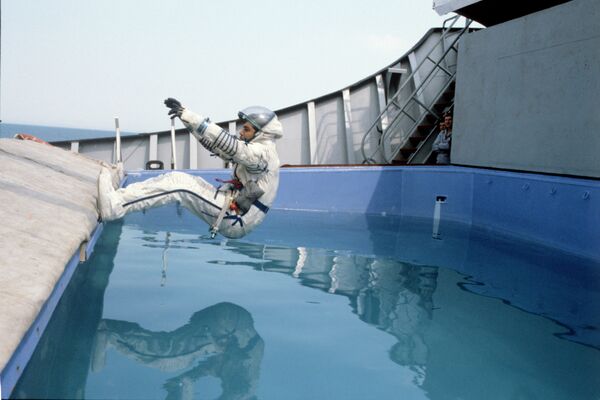
4/14
© Sputnik / Alexander Mokletsov
First conceived as a research and testing range for the Soviet Defense Ministry, the facility eventually turned into an international space center.
Above: Indian research-cosmonaut Ravish Malhotra during water landing training as part of the preparations for a joint Soviet-Indian space flight.
Above: Indian research-cosmonaut Ravish Malhotra during water landing training as part of the preparations for a joint Soviet-Indian space flight.
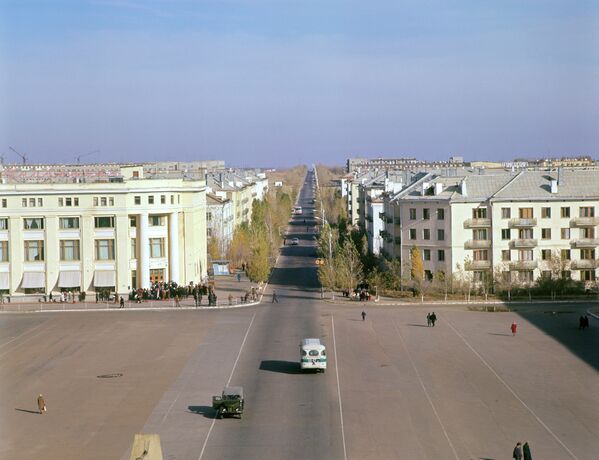
5/14
© Sputnik / Alexander Mokletsov
The town changed its name several times. First, it was nicknamed Zarya (Dawn) and was also named the township of Leninsky in 1958. It was then renamed the town of Leninsk and finally Baikonur in 1969 and 1995, respectively.
Above: Lenin Square in Zvezdograd (the unofficial name of the village of Leninsky, at present - the city of Baikonur).
Above: Lenin Square in Zvezdograd (the unofficial name of the village of Leninsky, at present - the city of Baikonur).
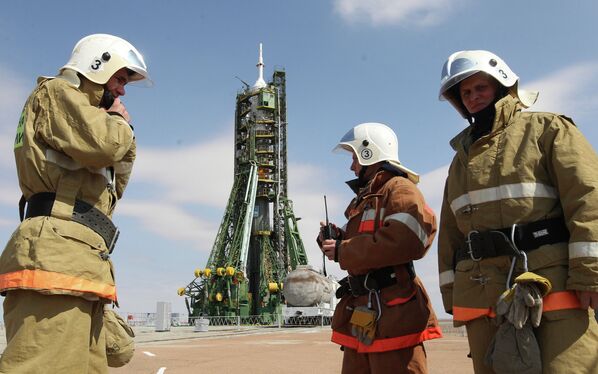
6/14
© Sputnik / Alexey Kudenko
The Baikonur Space Center covers territory measuring 70 by 100 kilometers with a total area of 6,717 square kilometers. Its ground infrastructure has 12 launch facilities, including six operational launch pads.
Above: Russian Emergency Situations Ministry staff provides security on the launch pad before launch of the Soyuz TMA-21 "Gagarin" at the Baikonur Cosmodrome.
Above: Russian Emergency Situations Ministry staff provides security on the launch pad before launch of the Soyuz TMA-21 "Gagarin" at the Baikonur Cosmodrome.

7/14
© AP Photo / Mikhail Metzel
The center has two refueling and fuel-neutralization stations, a multipurpose refueling station and a technical station for refueling spacecraft and boosters with rocket propellant components and compressed gases.
Above: Two French engineers inspect the Cluster science spacecraft at Cosmodrome Baikonur in Kazakhstan.
Above: Two French engineers inspect the Cluster science spacecraft at Cosmodrome Baikonur in Kazakhstan.
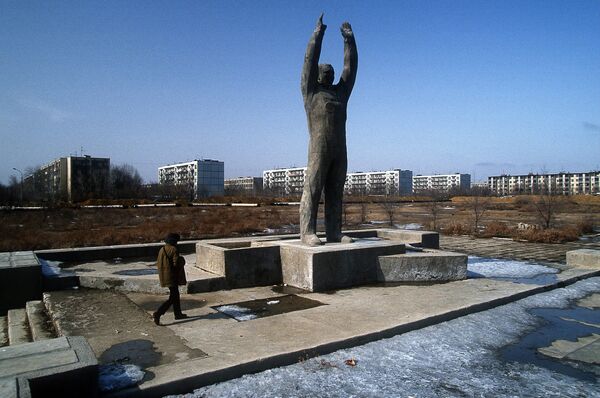
8/14
© Fotobank.ru/Getty Images / Sven Creutzmann
Both Sputnik-1, the world’s first orbital spaceflight, and Vostok-1, the first manned spacecraft in human history, were launched from one of Baikonur’s launch pads, known as Gagarin’s Start.
Above: A monument to Yury Gagarin in the town of Baikonur.
Above: A monument to Yury Gagarin in the town of Baikonur.
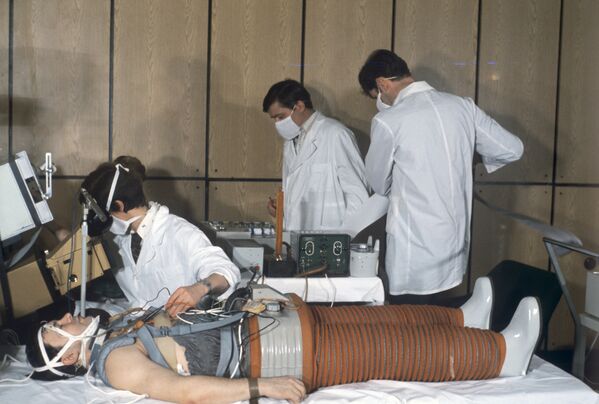
9/14
© Sputnik / Sentsov
After being in zero gravity for a long time, astronauts undergo orthostatic examination at the Baikonur Space Center.
Above: Hero of the Soviet Union, cosmonaut Yuri Romanenko during an orthostatic medical test.
Above: Hero of the Soviet Union, cosmonaut Yuri Romanenko during an orthostatic medical test.

10/14
© Sputnik / Alexander Mokletsov
Before delivering the carrier-rocket to the launch pad, technical managers and the State Commission hold a meeting on starting preparations for the launch. By tradition, the meeting begins at 5:00 p.m. local time.
Above: A rocket launch at the Baikonur spaceport, Kazakhstan, 1978.
Above: A rocket launch at the Baikonur spaceport, Kazakhstan, 1978.
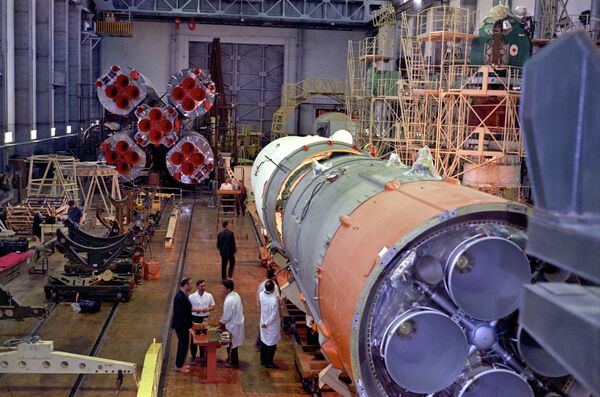
11/14
© Sputnik / Alexander Mokletsov
For about 40 years, Baikonur was managed by the Soviet Defense Ministry, as well as the Ministry of General Machine-Building, which oversaw spacecraft and launch vehicle manufacture. The Russian Defense Ministry and the Russian Federal Space Agency (Roscosmos) subsequently took over its management.
Above: Assembly of a Soyuz spaceship launch vehicle at the operations and checkout building of the Baikonur Space Center.
Above: Assembly of a Soyuz spaceship launch vehicle at the operations and checkout building of the Baikonur Space Center.
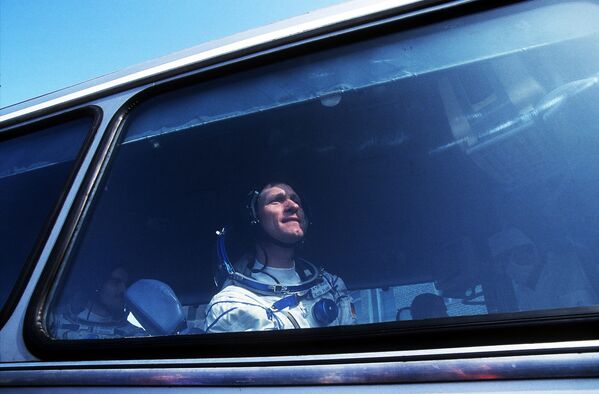
12/14
© Fotobank.ru/Getty Images / Sven Creutzmann
The space center now has discontinued military projects. Roscosmos and the Baikonur town administration run its facilities on behalf of the Russian government.
Above: German astronaut Klaus-Dietrich Flade at the Baikonur Space Center.
Above: German astronaut Klaus-Dietrich Flade at the Baikonur Space Center.

13/14
© Sputnik
In 1994, the government of Kazakhstan leased the Baikonur Space Center to the Russian government for a period of 20 years. On January 9, 2004, the Presidents of the Russian Federation and the Republic of Kazakhstan agreed to extend the lease term until 2050.
Above: Crew of the Voskhod spacecraft: Konstantin Feoktistov, Boris Yegorov, Vladimir Komarov, planting trees at Friendship Park the day before a spaceflight, the Baikonur Space Center, October 1964.
Above: Crew of the Voskhod spacecraft: Konstantin Feoktistov, Boris Yegorov, Vladimir Komarov, planting trees at Friendship Park the day before a spaceflight, the Baikonur Space Center, October 1964.
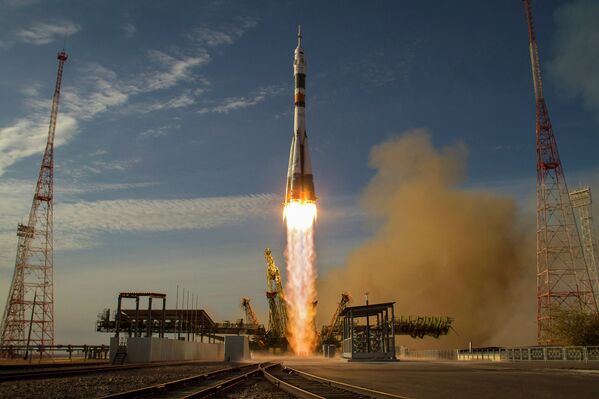
14/14
© Fotobank.ru/Getty Images / NASA/Bill Ingalls
Russia has been rebuilding the space center and the town for the past ten years. Subsidiaries of Roscosmos are being established here, and commercial launches involving foreign companies are also conducted.
Above: The Soyuz rocket with Expedition 33/34 crew members launches to the International Space Station October 23, 2012 in Baikonur, Kazakhstan.
Above: The Soyuz rocket with Expedition 33/34 crew members launches to the International Space Station October 23, 2012 in Baikonur, Kazakhstan.

